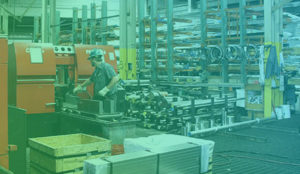The Raspberry Pi is one of the greatest innovations for creators in all sorts of industries. Along with 3D printing, the Pi gives builders unprecedented ease when making prototypes. The Pi is a tiny computer and can be easily expanded with a number of interfaces. It runs Linux, and can be customized pretty much infinitely. Still, there’s a point at which a product’s life-cycle grows beyond the need for the venerable Pi.
Custom Boards & Chips vs Raspberry Pi
When do you switch from the Raspberry Pi to custom chips? There’s no exact formula, but there are some considerations. Obviously you’ll need to schedule in time to design custom boards or chips to replace what the Pi does long before you plan to go into production, but this design can be parallel to testing with the Pi in prototypes.
First, is the Pi overpowered? There’s no reason to waste money on a powerful device when something simpler will do. Of course, during prototyping the device will give you the exact parameters of any boards you’ll need to build so you can create a production model. The Pi isn’t optimized for any particular purpose, which makes troubleshooting a lot harder on support staff. There’s also the size factor, as the Pi (even though they have become remarkably tiny) might not squeeze into a custom casing. This is an even bigger deal if you’re using batteries in your product, as the power savings will be well worth the effort.
How many units do you need to make? Depending on the complexity and purpose of a short run production device, you might make the switch. It’s quite possible that 100 units will do just fine with a Raspberry Pi inside! But over 1,000 and it’s likely better to switch to custom boards. For one thing, there could be supply issues with the Pi. Believe it or not, supply fluctuates along with models and features and price. You don’t want a sudden vendor shift or feature removal to bring your supply chain to a halt. An OEM will better serve long-term.
Safety & Security
Then there’s the need for certifications. Depending on your feature set, this could involve numerous regulatory bodies and other groups. Even if you have your supplier locked down, you’re adding complexity to the product that will bog down the process.
Lastly, how secure is your product? If it’s an IoT device security has become an important selling point. This also speaks to the readiness of the software (and liscensing issues with open source agreements). Raspberry Pi units are open and hackable by their nature and might not be as secure as a shipping consumer product should be. Having to support the security (or lack thereof) in a Pi unit is not a headache you want or need.
Conclusion
While the Raspberry Pi has become an indispensable tool for prototyping devices, it’s important to keep its utility within the scope of your product’s lifecycle. That is, understand the Pi isn’t suited to being tossed into production devices. Knowing when to start moving over to a custom board means being aware of how complex your final product will be, and how soon you want to scale up production.
Written by: Victor Agreda
Edited by: Frederick Bravey





